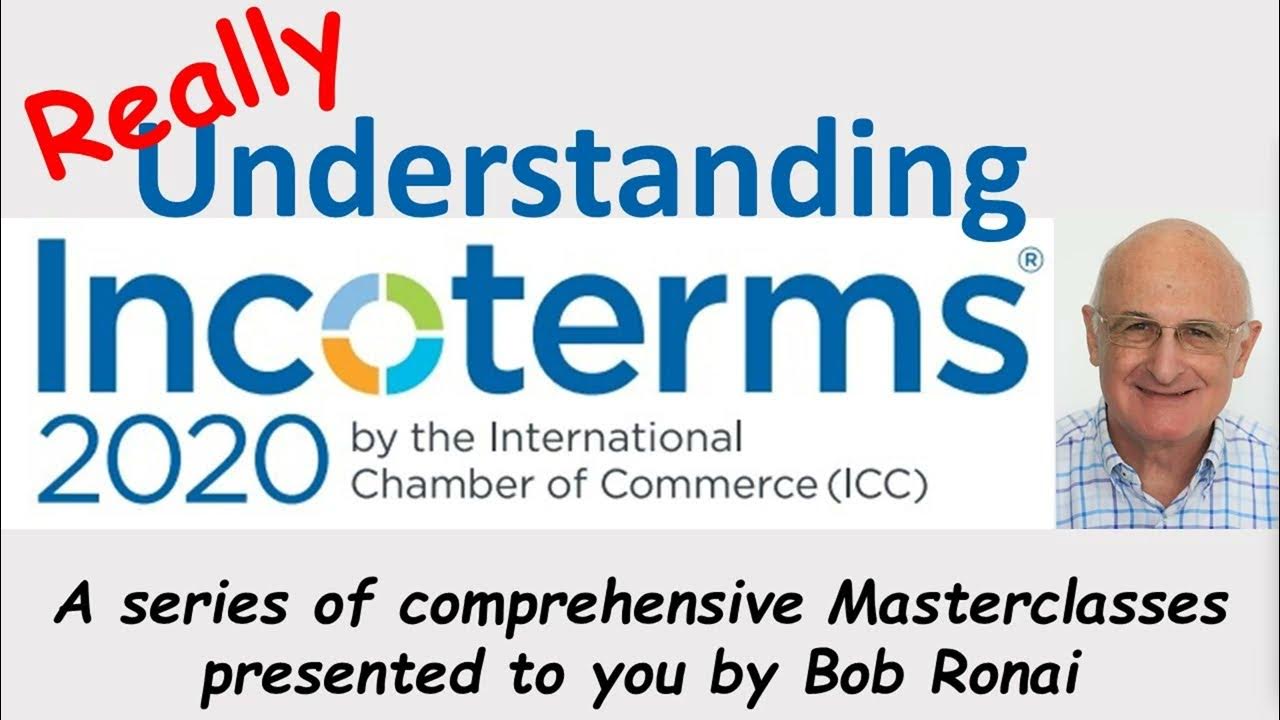What incoterms should I use to ship to India or Export to India?
Summary
TLDRThis video discusses the best Incoterms for shipments from the USA to India, focusing on CFR (Cost and Freight) and DAP (Delivered at Place). It explains the differences between these terms, with a particular emphasis on the challenges faced by American sellers unfamiliar with Indian customs regulations. The conversation highlights the potential issues with customs duties, taxes, and documentation requirements, advising sellers to let consignees in India handle these processes to avoid unexpected costs and delays.
Takeaways
- 😀 CFR and DAP are the two most commonly used Incoterms for shipments from the USA to India.
- 😀 CFR involves the seller covering costs and freight to the port of destination, while DAP includes the seller handling delivery to the buyer's premises.
- 😀 The choice between CFR and DAP depends on whether the buyer or seller will handle the customs clearance and duties in the destination country.
- 😀 Sellers may prefer CFR if they only need to cover the cost of transportation to the port, leaving customs handling to the buyer.
- 😀 DAP is preferred when the seller is responsible for all logistics, including customs clearance and delivery to the buyer's location.
- 😀 India's complex customs and duty system makes it risky for American sellers to handle customs on their own.
- 😀 Letting the buyer handle customs clearance can reduce the risk of unexpected costs, fines, and delays for American exporters.
- 😀 Sellers can face additional charges or fines due to missing documentation or unfamiliarity with local regulations in India.
- 😀 There is a risk of surprise costs for sellers if the buyer is not fully aware of India’s tax and duty structures.
- 😀 It’s advisable for American exporters to suggest that their importers in India handle the import processes themselves for smoother transactions.
Q & A
Which Incoterms are commonly used for shipments from the USA to India?
-The two most commonly used Incoterms for shipments from the USA to India are CFR (Cost and Freight) and DAP (Delivered at Place).
What does the Incoterm CFR entail in terms of delivery responsibilities?
-Under CFR, the seller is responsible for delivering the goods to the port of shipment, and the cost of freight to the destination port is also covered by the seller. However, the buyer is responsible for unloading the goods and any additional costs beyond the port.
What does the Incoterm DAP involve in terms of responsibility for delivery?
-DAP involves the seller taking on the responsibility for delivering goods to a specified destination, including handling customs clearance and delivery up to the final recipient's door.
Why might a seller prefer CFR over DAP in international shipments?
-A seller might prefer CFR because they only need to handle the goods up to the port of shipment, which simplifies the logistics compared to DAP, where they would need to manage additional responsibilities like customs clearance and delivery to the final destination.
Why is it beneficial for the consignee in India to handle customs and duty processes?
-It is beneficial for the consignee in India to handle customs and duty processes because they are more familiar with the local regulations, taxes, and customs procedures, potentially avoiding unexpected fees or delays that the seller might face due to lack of knowledge.
What risks do American shippers face when they are not familiar with India's customs requirements?
-American shippers may face risks such as delays, fines, or unexpected taxes if they are unaware of India's specific customs requirements. Additional documentation may be needed, and not having this could lead to complications or increased costs.
How can the lack of familiarity with local customs regulations affect the shipping process?
-A lack of familiarity with local customs regulations can result in delays, fines, or the imposition of higher taxes or duties due to incomplete or incorrect documentation, which could complicate the shipping process and increase overall costs.
How does the technicality of customs and duty structures in India impact the shipping process?
-The complex and often changing customs and duty structures in India can lead to unexpected costs and delays if not properly understood. Sellers may find themselves surprised by the additional charges once the goods arrive.
Why do experts recommend that importers in the USA use experienced freight forwarders?
-Experts recommend that importers in the USA use experienced freight forwarders because they can help navigate complex international shipping regulations, ensure proper documentation, and avoid costly mistakes, ensuring smoother shipments.
What role does familiarity with local regulations play in the smoothness of international shipping?
-Familiarity with local regulations plays a crucial role in ensuring the smoothness of international shipping. It helps prevent errors in customs procedures, reduces the risk of fines or delays, and ensures that all required documentation is in order.
Outlines

此内容仅限付费用户访问。 请升级后访问。
立即升级Mindmap

此内容仅限付费用户访问。 请升级后访问。
立即升级Keywords

此内容仅限付费用户访问。 请升级后访问。
立即升级Highlights

此内容仅限付费用户访问。 请升级后访问。
立即升级Transcripts

此内容仅限付费用户访问。 请升级后访问。
立即升级5.0 / 5 (0 votes)






